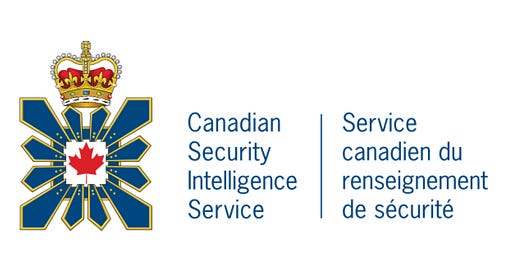Profile of a Spy Agency: The Canadian Security Intelligence Service (CSIS)
What is CSIS?
The Canadian Security Intelligence Service (CSIS) is Canada’s leading civilian intelligence agency, established in 1984 to address the growing need for an institution that separates intelligence work from law enforcement. CSIS investigates threats to Canada’s national security and provides critical intelligence to the Government of Canada. In a world of mounting cyber threats, geopolitical instability, and global terrorism, CSIS plays a pivotal role in maintaining Canada’s safety, sovereignty, and strategic interests.
Section 1: Vision, Symbolism, and Historical Foundations
1.1 CSIS Vision Statement
CSIS operates with a clear vision: "A safe, secure and prosperous Canada, through trusted intelligence and advice." The agency supports national decision-making through the collection and analysis of intelligence related to terrorism, espionage, foreign interference, and other security threats.
1.2 CSIS Logo and Symbolism
The CSIS emblem features a red maple leaf enclosed in a blue and gold palisade, topped with the Royal Crown. These elements symbolise:
Maple Leaf: National identity and patriotism
Palisade: Defence and resilience against threats
Royal Crown: Commitment to the constitutional monarchy and national peace
Blue and Gold: Historical continuity with the Royal Canadian Mounted Police (RCMP)
1.3 Founding and Historical Development
Before CSIS, Canada’s intelligence work was managed by the RCMP Security Service. Concerns over conflicts of interest and civil liberties, particularly highlighted during the McDonald Commission investigations in the late 1970s, led to the 1984 CSIS Act and the formation of a standalone intelligence agency.
Key Milestones:
1984: CSIS is established by an Act of Parliament.
First Director: Thomas D’Arcy Finn (1984–1987), a lawyer with public service experience.
Initial Mandate: Investigate threats to national security with judicial oversight.
1.4 Post-9/11 Transformation
The 9/11 terrorist attacks fundamentally reshaped CSIS priorities. Counterterrorism replaced Cold War-era concerns such as Soviet espionage. The Anti-Terrorism Act of 2015 granted CSIS expanded powers:
Threat Disruption Measures
International Intelligence Operations
Warrant-based Operations Beyond the Charter of Rights
Accountability and civil liberties debates led to the creation of oversight agencies such as the National Security and Intelligence Review Agency (NSIRA).
Section 2: CSIS Organisational Structure
2.1 Hierarchy and Leadership
CSIS operates under the Department of Public Safety, and is overseen by the Minister of Public Safety and Emergency Preparedness.
Key Roles:
Director of CSIS: Currently Daniel Rogers
Deputy Directors: Lead divisions like operations, administration, and partnerships
Assistant Directors: Oversee HR, legal affairs, requirements, and technical intelligence
Audit and Evaluation Executive: Ensures internal oversight and compliance
2.2 Budget and Expenditures
Funding Overview:
2019-2020 Budget: CAD $611.1 million (USD $458.33 million)
2023-2024 Budget: CAD $828.4 million (USD $621.30 million)
Growth: 35.6% increase over four years
Authorised vs. Actual Spending:
Average Authorities (2019-2025): CAD $709.37 million (USD $532.03 million)
Average Expenditures: CAD $686.20 million (USD $514.65 million)
Section 3: CSIS Operations and Tactical Focus
3.1 Core Operational Areas
CSIS is responsible for a broad range of security threats, including:
Counterterrorism: Monitoring and disrupting domestic and international terror plots
Cybersecurity: Protecting Canada’s digital infrastructure from espionage and sabotage
Counter-Espionage: Identifying and mitigating foreign spying activities
Foreign Influence: Detecting covert attempts to influence Canadian politics and institutions
Critical Infrastructure Protection: Conducting risk assessments and planning security exercises
Counter-Proliferation: Preventing the spread of weapons of mass destruction
Security Screening: Vetting individuals and organisations for national security risks
3.2 Intelligence Collection Methods
CSIS gathers intelligence using a diverse toolkit:
Human Intelligence (HUMINT): Informants and covert sources
Signals Intelligence (SIGINT): Technical intercepts and digital surveillance
Open Source Intelligence (OSINT): Publicly available data including media and academic reports
Foreign Partnerships: Intelligence-sharing within the Five Eyes Alliance
Security Liaison Officers: Deployed in embassies and consulates abroad
3.3 Workforce Diversity and Inclusion
CSIS is actively working to build a representative and inclusive workforce:
Women: 48.4% of employees
Non-Caucasian Groups: 19.8%
Indigenous Peoples: 2.2%
Persons with Disabilities: 6.4%
Initiatives:
People First Strategy
Diversity, Equity, and Inclusion (DEI) Strategy
Section 4: The Future of CSIS
4.1 Strategic Challenges and Opportunities
The future of CSIS will be influenced by:
Technological Innovation: AI, quantum computing, and cyber warfare
Geopolitical Shifts: Growing influence of China, Russia, and non-state actors
Domestic Radicalisation: Emerging threats from far-right, eco-extremist, and lone actors
4.2 Foreign Intelligence Capability Debate
Canada remains an anomaly among the Five Eyes countries in lacking a dedicated foreign human intelligence agency. Recent policy discussions propose either:
Expanding CSIS Mandate to include foreign HUMINT
Creating a New Foreign Intelligence Agency, akin to the CIA (USA) or SIS/MI6 (UK)
Potential Benefits:
Improved strategic foresight
Enhanced global intelligence cooperation
Strengthened national resilience in international conflict scenarios
Section 5: Conclusion
CSIS is at the heart of Canada’s national security architecture. Since its formation in 1984, the agency has adapted to the dynamic landscape of global and domestic threats. Its ability to provide actionable intelligence and sound advice to government officials has positioned it as an indispensable institution.
As Canada grapples with the challenges of cyber warfare, foreign interference, and terrorism, CSIS is poised to evolve further—potentially expanding its mandate or paving the way for a new foreign intelligence counterpart. For citizens, policy-makers, and international partners, understanding CSIS is key to appreciating Canada’s approach to modern intelligence and national security.




